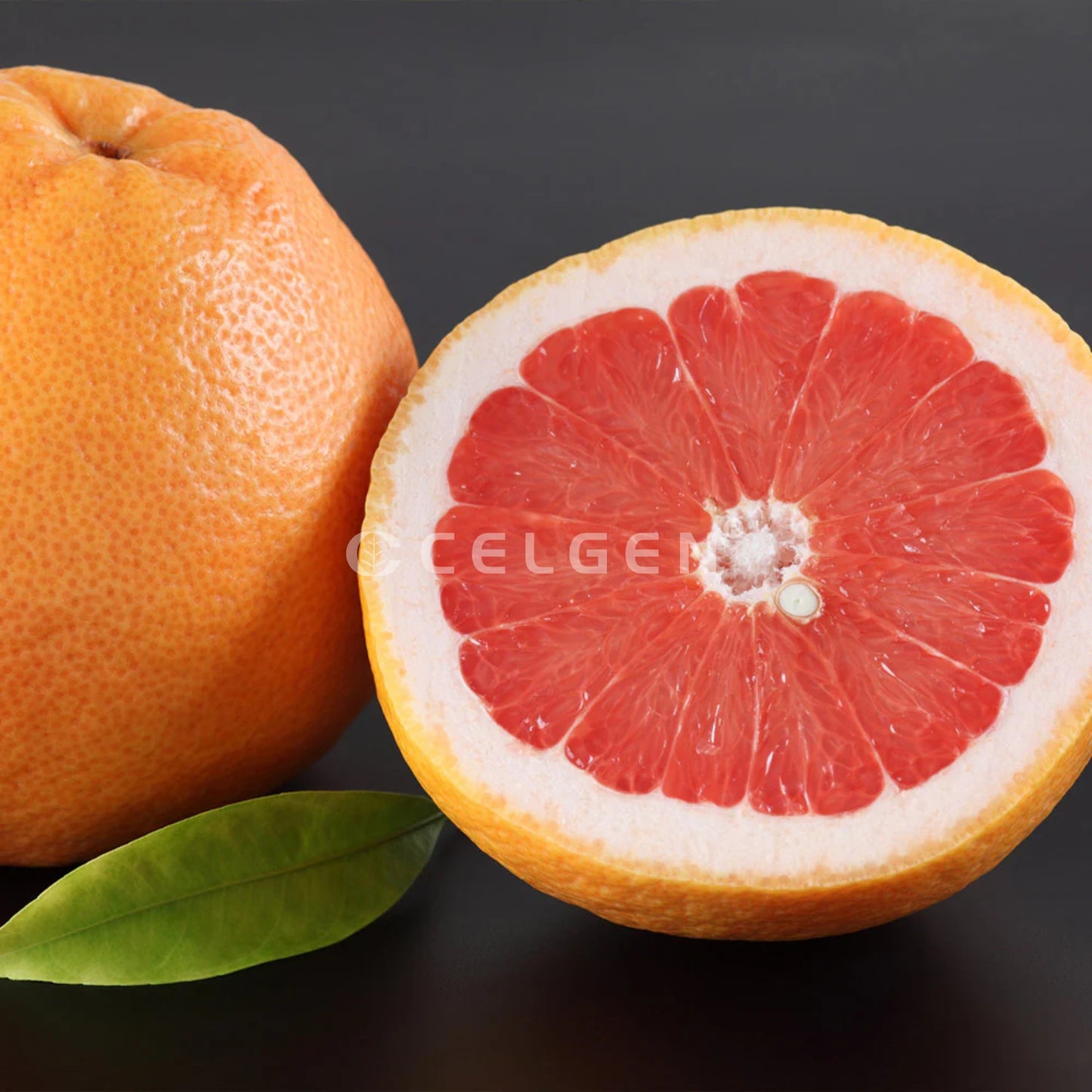My Store
Ray Ruby Grapefruit Tree – Citrus × paradisi ‘Ray Ruby’
Ray Ruby Grapefruit Tree – Citrus × paradisi ‘Ray Ruby’
Couldn't load pickup availability
Delicious Grapefruit on a Compact, Ornamental Tree
With its deep green leaves, fragrant white spring blossoms, and golden-orange fruit, the CELGEN Ray Ruby Grapefruit Tree is as beautiful as it is productive. This variety combines the sweetness of Ruby Red with a refreshing tartness, delivering grapefruits that are perfect for snacking, juicing, or adding to recipes.
Superior Growth with CELGEN Rootstock
Each Ray Ruby Grapefruit Tree is grafted on our own tissue culture–developed rootstock, produced in the CELGEN laboratory. This provides:
-
Uniform and vigorous growth
-
Resistance to soil-borne diseases and nematodes
-
Long-term productivity and fruit quality
Compact Growth, Big Flavor
Maturing at just 12–15 feet in the ground (or 5–6 ft in pots), Ray Ruby is perfect for smaller gardens, patios, and walkways. In cooler climates, it thrives in containers that can be moved indoors during winter.
Fruit & Tree Characteristics
-
Golden-orange skin with juicy, ruby-pink flesh
-
Sweet-tart flavor balance
-
Fragrant white spring blossoms
-
Compact growth for easy harvesting
Harvest Season
Expect an abundant crop from November through May, providing months of fresh, home-grown citrus.
Specifications
-
Botanical Name: Citrus × paradisi ‘Ray Ruby’
-
Fruit: Sweet-tart flavor, juicy, easy to peel
-
Rootstock: Grafted on tissue culture–developed rootstock (CELGEN Laboratory)
-
Mature Height: 5–6 ft in pots, 12–15 ft in the ground
-
Harvest Season: November–May
-
Light Requirement: Full sun (6–8 hrs/day)
-
Pollination: Self-pollinating
-
Uses: Fresh eating, juicing, salads, desserts
Care Guide
1. Planting – Choose a sunny, well-drained location. For pots, use a container twice the size of the shipped pot with drainage holes.
2. Watering – Water weekly during the first year, more in hot/dry weather. Once established, water every 2 weeks when the top 2 inches of soil are dry.
3. Fertilizing – Use a citrus-specific fertilizer from February to September every 4–6 weeks.
4. Pruning – Remove suckers and prune dead or damaged branches in early spring after frost danger has passed.
5. Pollination – Self-pollinating, but planting a second tree can increase yield. Indoor trees can be hand-pollinated with a fine paintbrush.
Share






